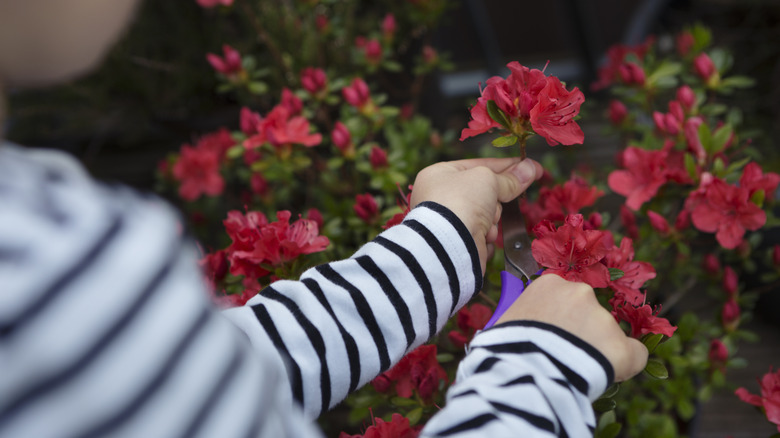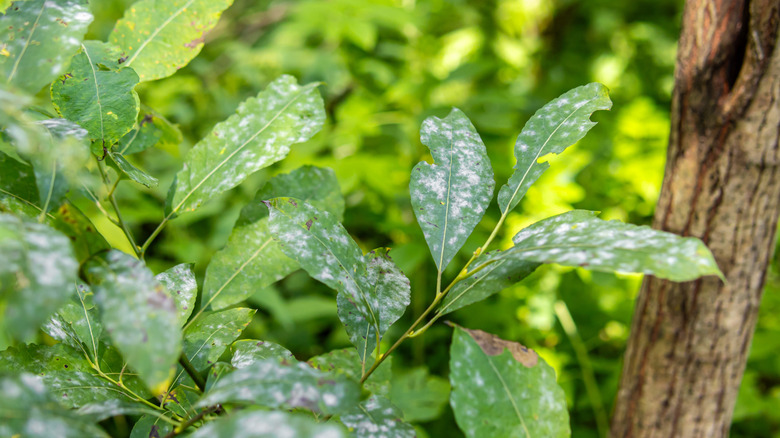Think Twice Before Growing Azaleas In Your Garden. Here's Why
Azaleas are admired for their vibrant spring blooms in shades of pink, white, and purple, but they require very specific conditions to grow well. These shrubs don't tolerate extremes — they struggle in both overly dry and overly wet environments. To grow well, they need steady moisture, but the soil must drain easily. Areas that stay soggy or collect water after rain can lead to root damage, especially if the plant sits in those conditions for long periods.
Sun exposure is just as important. Azaleas grow best when they get a few hours of morning light followed by shade later in the day. Too much direct sun, especially near heat-reflective surfaces like concrete or brick, can dry the plant out quickly. Drought also poses a risk, so gardeners in hot or unpredictable climates need to water consistently during dry spells. Meeting all of these needs requires careful placement and attention, and learning how to care for an azalea tree can be more work than expected for gardeners seeking a low-maintenance plant.
Soil pH and competition make azaleas harder to grow
If you plan to plant azalea outdoors, it's important to know they also require acidic soil with a pH between 4.5 and 6.0. In soil with a pH above 6.0, the plants can develop nutrient deficiencies and appear pale or weak. A soil test is necessary before planting to determine whether acidifying is required. In many cases, gardeners need to apply products like elemental sulfur or ferrous sulfate to lower the pH. These materials must be watered in and reapplied monthly for several months to be effective. However, in soils with a pH above 7.5, it can be very difficult to make lasting changes. In such cases, choosing a different plant may be the better option.
Azaleas should not be planted under trees, even though trees can provide shade. Tree roots compete with azaleas for nutrients and moisture, which makes it harder for the shrub to stay healthy. If azaleas are planted in the wrong location or overfertilized, the plant may show signs of stress. The most effective way to correct these problems is to first adjust the soil pH. This process takes time, and gardeners need to monitor progress over several months to avoid over-acidifying the soil, which can cause additional damage.
Common diseases and pests can affect azaleas
Azaleas may look tough, but they are highly susceptible to a range of pests and diseases that can impact both their appearance and long-term health. One serious concern is Phytophthora dieback, a fungal disease that spreads when water splashes infected soil or plant material onto the leaves. This disease is especially aggressive in gardens that use overhead sprinklers and can severely damage azaleas, rhododendrons, and similar shrubs.
Insects are another issue. Azalea leafminers begin appearing in spring, feeding between leaf layers and causing blotchy damage. As the insects grow, they create silk-lined tunnels by curling the leaf tips and hiding inside to feed. This behavior can lead to early leaf drop and browning during the warmer months, especially if the infestation is large. Azalea whiteflies are also common on varieties with hairy leaves. These small insects feed beneath the foliage and can be hard to notice at first. Over time, their feeding causes leaves to weaken and fade in color. As they feed, they leave behind a sugary residue that can lead to mold buildup on the surface of the leaves. This combination of stress and surface damage can cause the plant to look wilted and discolored, especially during warm weather.
Powdery mildew is a common issue in deciduous azaleas, especially in young plants growing in shaded areas. This white fungus disease shows up as a pale, powder-like layer on the leaves, and is especially common during cool, damp periods. The fungi stay active by producing spores that travel on the wind and reach nearby plants. Even after the season ends, the spores can remain inside the buds and return again the following year unless the plant is treated properly.


